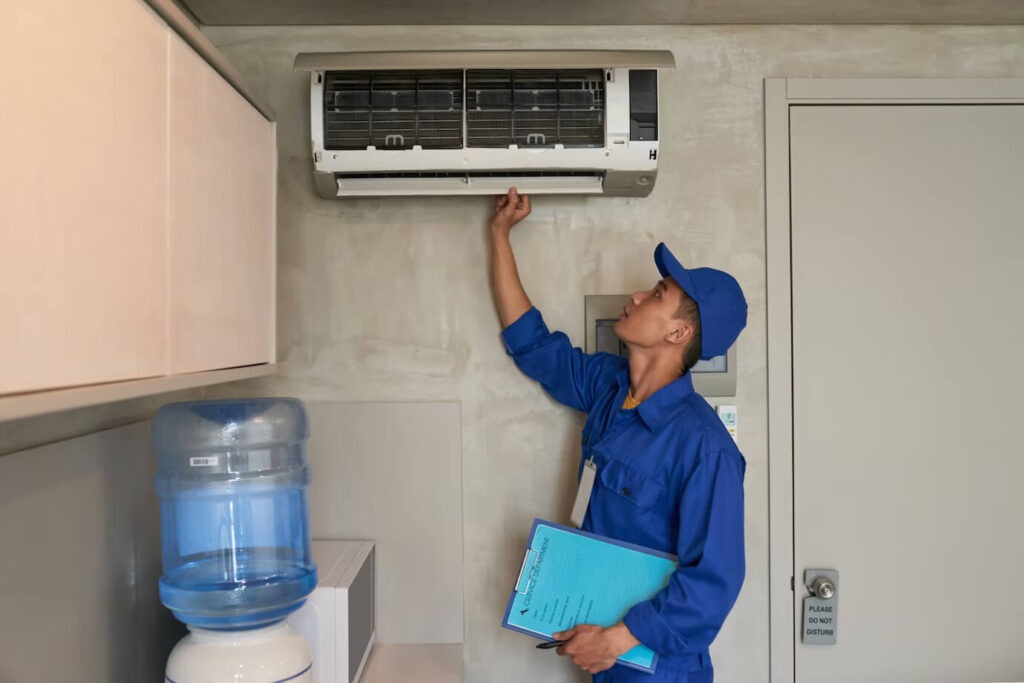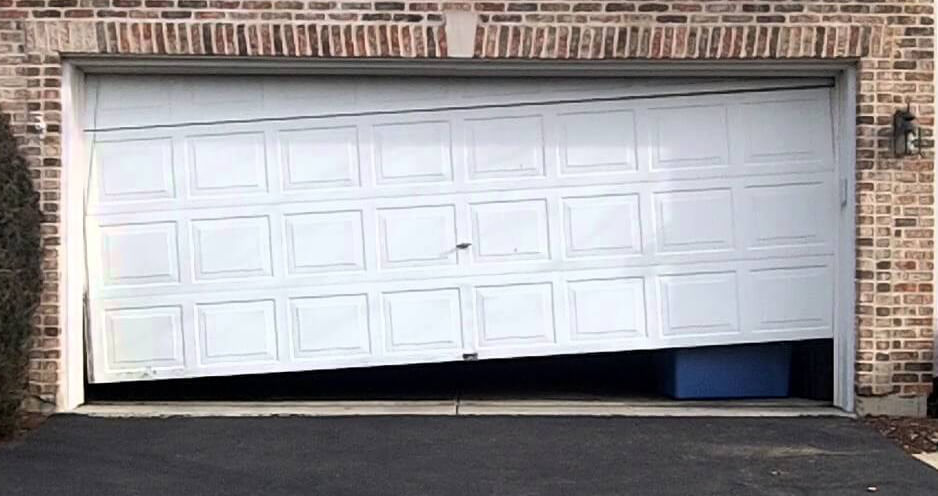
Brooklyn, New York, a borough that never sleeps, is no stranger to sweltering summers, making air conditioners more than just a luxury—they’re a lifeline. As temperatures rise, so does our dependence on these cooling marvels. But what happens when your AC starts acting up? Don’t sweat it; we’re here to delve into the nitty-gritty of addressing common air conditioner issues, ensuring you stay cool as a cucumber, even in the hottest Brooklyn days.
The Rise of Air Conditioning
Who would’ve thought that what began as a quest for comfort in the early 20th century would evolve into a necessity? Air conditioners have seamlessly woven themselves into the fabric of modern living, becoming an indispensable companion in Brooklyn’s scorching summers. As the mercury climbs, the hum of AC units becomes the soundtrack of urban survival.
The Purpose of Our Guide
Let’s face it—AC issues are the unwelcome guests that can turn a comfortable home into an unbearable sauna. From mysterious leaks to the ominous silence of a malfunctioning unit, these problems can leave you hot under the collar. Our mission? Equipping you with the knowledge to tackle these issues head-on. Consider this guide your roadmap through the twists and turns of air conditioner troubleshooting.
What to Expect
In this comprehensive guide, we’ll dissect common air conditioner problems, exploring everything from insufficient cooling that leaves you sticky as a popsicle to the mysterious hums and clanks that echo through your Brooklyn apartment. We’ll dive into the intricacies of AC components, unravel the mysteries of leaks, and equip you with the skills to troubleshoot like a seasoned pro.
So, whether you’re a Brooklynite battling the heat or just someone curious about the heartbeat of their AC unit, buckle up. We’re about to embark on a journey to keep your cool factor intact, even when the asphalt in Brooklyn feels like it’s ready to fry an egg!
Understanding Air Conditioner Components
The Condenser
The condenser, often likened to an AC’s beating heart, works tirelessly to transform high-pressure, high-temperature gas into a liquid. Picture it as the cool custodian, shedding heat and paving the way for a refreshing breeze.
| Common Issues | Probable Causes |
| Inadequate cooling | Dirty or clogged condenser coils |
| Strange noises | Loose or damaged fan blades |
The Compressor
Consider the compressor the muscle behind the cool. This component compresses refrigerant, propelling it through the system. When it stumbles, so does your AC’s ability to keep things frosty.
| Common Issues | Probable Causes |
| Insufficient cooling | Compressor failure |
| Frequent on-off cycles | Refrigerant issues |
The Evaporator
Nestled inside your unit, the evaporator handles the absorption of heat, turning liquid refrigerant into a refreshing mist. If your AC dances to a warm tune, the evaporator might be facing performance issues.
| Common Issues | Probable Causes |
| Weak airflow | Dirty or frozen evaporator coils |
| Strange odors | Mold or bacterial growth |
Refrigerant
Refrigerant, often considered the AC’s lifeblood, circulates through the system, absorbing and releasing heat. Low refrigerant levels can turn your cooling haven into a lukewarm disappointment.
| Common Issues | Probable Causes |
| Inadequate cooling | Refrigerant leaks |
| Hissing sounds | Refrigerant undercharge |
A Peek into Common Issues

- Insufficient Cooling:
- Dirty or blocked air filters: A clogged filter restricts airflow, hindering cooling efficiency.
- Low refrigerant levels: The lifeblood of your AC might be running thin, causing lackluster cooling.
- Issues with the compressor: A faltering compressor can’t flex its cooling muscles effectively.
- Noisy Operation:
- Loose or damaged components: Unsecured parts can create a cacophony that disrupts your peace.
- Issues with the fan motor: A malfunctioning fan motor may produce annoying squeaks or clanks.
- Debris in the unit: Foreign objects rattling around can turn your AC into a noise orchestra.
- Leaks:
- Refrigerant leaks: Loss of refrigerant can compromise your AC’s ability to chill.
- Water leaks: Unwanted pooling around your unit could indicate drainage issues.
- Poor Air Quality:
- Dirty or clogged filters: Neglected filters become breeding grounds for dust and allergens.
- Mold or mildew growth: Moist conditions can foster the unwelcome growth of airborne intruders.
- Thermostat Problems:
- Incorrect settings: An accidental nudge or miscalibration can throw your temperature control out of sync.
- Faulty thermostat: A malfunctioning thermostat might misinterpret your cooling needs.
- Electrical Issues:
- Faulty wiring: Damaged wires can disrupt the electrical flow, leading to operational hiccups.
- Tripped circuit breaker: An overloaded system might prompt the circuit breaker to play the role of party pooper.
Stay tuned as we unravel the mysteries of troubleshooting and delve into preventive measures to keep your AC humming a cool tune.
Troubleshooting and Diagnosing
Step 1: Checking Air Filters
Your AC’s first line of defense against dust and debris is its air filter. Regular checks are crucial, and if it’s dirtier than a pig in mud, it’s time for a change. Clogged filters restrict airflow, leading to insufficient cooling and increased strain on the entire system.
Step 2: Inspecting the Thermostat
Your thermostat wields power over your AC’s behavior. Confirm that it’s not playing mind games by double-checking the settings. If your thermostat appears as confused as a chameleon in a bag of Skittles, recalibrate or replace it.
Step 3: Examining Refrigerant Levels
Too much or too little refrigerant can throw your AC into a tizzy. Consult your AC’s manual to locate the refrigerant lines and assess if they resemble a well-balanced seesaw. If not, you may need a refrigerant recharge or repair.
Step 4: Assessing Electrical Components
Frayed wires and tripped breakers are like ghosts in the machine, haunting your AC’s performance. Inspect wiring for signs of wear, and if your circuit breaker resembles a disco light, a professional electrician may be in order.
Step 5: Examining Coils – Condenser and Evaporator
Condenser and evaporator coils, akin to your AC’s lungs, demand attention. Clean coils ensure optimal heat exchange. If they’re dirtier than a mechanic’s rag, use a soft brush or vacuum to gently remove debris. For frozen coils, thaw them before resuming operation.
Importance of Regular Maintenance

Like an annual health checkup, regular AC maintenance is proactive care. Scheduled inspections catch potential issues before they morph into major headaches. Cleaning coils, lubricating moving parts, and tightening loose connections should be part of your AC’s annual spa day.
When to Seek Professional Help
While we champion DIY spirit, some AC issues are better left to the pros. If you find yourself drowning in technical jargon or facing a problem more puzzling than a Rubik’s Cube, it’s time to summon the HVAC cavalry. Professionals bring expertise and, more importantly, spare you from potential DIY disasters.
In our next segment, we’ll explore preventive measures, ensuring your AC remains a cool comrade rather than a troublesome adversary. So, tighten those metaphorical tool belts, and let’s continue our journey through the nuances of air conditioner care.
Preventive Measures
Regular Cleaning and Maintenance
- Cleaning or Replacing Air Filters
Regular filter maintenance is the unsung hero of AC longevity. Dirty filters don’t just diminish air quality; they also force your AC to work harder. Make it a habit to inspect and clean or replace filters every 1-3 months, depending on usage.
- Clearing Debris Around the Unit
Your AC unit needs breathing space. Ensure the area around it is as clutter-free as a minimalist’s dream. Trim foliage, clear away debris, and maintain a two-foot clearance to allow proper airflow. Your AC will thank you with uninterrupted cool vibes.
Monitoring and Maintaining Refrigerant Levels
Refrigerant is the lifeblood of your AC, and keeping it at the right level is crucial. Regularly monitor for signs of leakage, such as hissing sounds or inadequate cooling. If you suspect a refrigerant issue, enlist professional help to identify and fix the leak.
Checking and Adjusting Thermostat Settings
Regularly check your thermostat settings to ensure they align with your comfort needs. A well-calibrated thermostat prevents unnecessary strain on your AC system. Consider investing in a programmable thermostat for precise temperature control and energy efficiency.
Scheduled Professional Inspections and Tune-Ups
Don’t wait for your AC to throw a tantrum before seeking professional help. Schedule annual inspections and tune-ups with a certified HVAC technician. They’ll perform a thorough check, identifying and rectifying potential issues before they transform into costly complications.
Summary of Preventive Measures
| Maintenance Task | Frequency | Benefits |
| Cleaning or replacing air filters | Every 1-3 months | Improved air quality, increased efficiency, and prolonged AC lifespan. |
| Clearing debris around the unit | Regularly | Uninterrupted airflow, preventing overheating and system strain. |
| Monitoring and maintaining refrigerant levels | Regular checks | Ensures optimal cooling efficiency and prevents system damage. |
| Checking and adjusting thermostat settings | Periodic calibration checks | Maintains accurate temperature control, preventing unnecessary strain on the AC. |
| Scheduled professional inspections and tune-ups | Annually | Early detection of potential issues, extended equipment lifespan, and optimized performance. |
In our final section, we’ll wrap up with a recap of common air conditioner issues, reiterating the importance of prompt attention and regular maintenance. So, stay tuned as we conclude our journey through the intricacies of keeping your AC as cool as a cucumber.
The Importance of Prompt Attention
In the world of air conditioning, procrastination is the enemy. Issues left unattended can escalate, resulting in costly repairs or premature AC retirement. Just as a stitch in time saves nine, a prompt response to problems can save you from sweating buckets during the peak of summer.
Emphasizing Regular Maintenance
If our journey through AC troubleshooting has taught us anything, it’s the paramount importance of regular maintenance. Like a well-oiled machine, your AC requires attention and care. Adopting preventive measures, from cleaning filters to scheduling professional tune-ups, ensures your AC remains a reliable ally in the battle against the heat.
Wrapping Up
As we conclude this guide, remember that addressing common AC issues is not just about restoring comfort; it’s about prolonging the life and efficiency of your cooling companion. Stay vigilant, embrace preventive measures, and don’t hesitate to call in the professionals when the going gets tough.
In the ever-evolving dance between you and your air conditioner, consider this guide your playbook. So, keep cool, stay informed, and let the cool breeze of a well-maintained AC be the soundtrack to your comfort. Until next time, stay frosty!
Frequently Asked Questions (FAQ)
Q1: Why is my air conditioner not cooling effectively?
A: Several factors could be at play, such as dirty filters, low refrigerant levels, or issues with the compressor. Refer to our troubleshooting guide for a step-by-step analysis of potential causes and solutions.
Q2: How often should I clean or replace my air filters?
A: For optimal performance, check and clean or replace your air filters every 1-3 months, depending on usage. Clean filters ensure improved air quality, increased efficiency, and a longer lifespan for your AC unit.
Q3: Can I fix refrigerant leaks on my own?
A: It’s recommended to consult with a professional HVAC technician for refrigerant leaks. Handling refrigerants requires expertise, and DIY attempts may lead to safety hazards and further damage to your AC system.
Q4: Is a noisy air conditioner normal?
A: While a low hum is typical, unusual noises like squeaks, clanks, or rattles may indicate loose components or debris. Consult our troubleshooting guide to identify and address these issues for a quieter cooling experience.
Q5: How can I improve air quality in my home?
A: Regularly clean or replace air filters, ensure proper ventilation, and address mold or mildew growth. Additionally, consider using air purifiers to enhance indoor air quality.
Q6: When should I seek professional help for AC issues?
A: If DIY troubleshooting doesn’t resolve the problem or if you encounter technical challenges beyond your expertise, it’s time to call in a professional HVAC technician. Annual professional inspections are also advisable to catch potential issues early on.
Q7: Can I use my AC without a thermostat?
A: While it’s technically possible, using an AC without a thermostat compromises temperature control and energy efficiency. A malfunctioning thermostat should be recalibrated or replaced for optimal performance.
Q8: How can I maintain refrigerant levels in my AC?
A: Monitoring for signs of refrigerant leaks, such as hissing sounds or inadequate cooling, is essential. If you suspect a refrigerant issue, consult with a professional technician to identify and rectify the problem.
Q9: Are professional AC inspections necessary?
A: Yes, scheduling annual professional inspections and tune-ups is highly recommended. Professionals can detect and address potential issues before they escalate, ensuring optimal performance and a prolonged lifespan for your AC unit.
Q10: What are the benefits of a programmable thermostat?
A: A programmable thermostat allows precise temperature control, helping you optimize energy efficiency. You can set specific temperature schedules, reducing unnecessary strain on your AC system and promoting cost savings.






